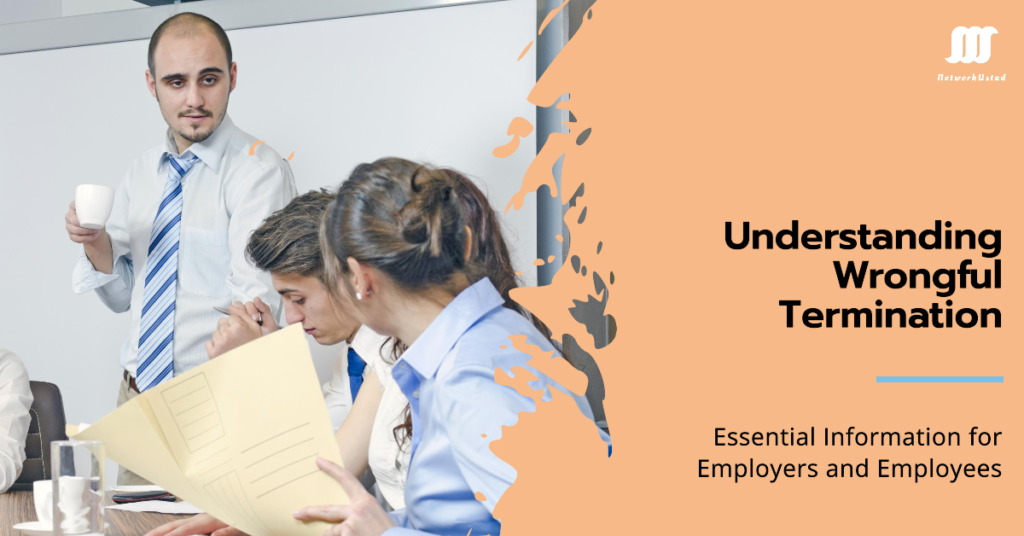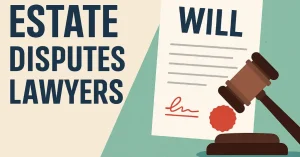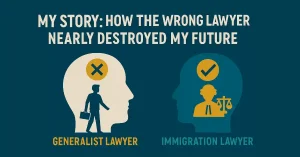Wrongful termination is a complex legal issue that can significantly impact employers and employees. Understanding the nuances involved is essential for protecting rights, ensuring compliance with labor laws, and maintaining a fair workplace. In 2025, the stakes are higher than ever due to a surge in discrimination charges—over 73,000 filed with the EEOC in fiscal year 2024 alone, marking a 5% increase from prior years—and evolving regulations around AI-driven decisions and remote work. This comprehensive guide dives deeper into the causes, protections, best practices, and recent developments, empowering both sides to navigate these challenges effectively.
What Constitutes Wrongful Termination?
Wrongful termination occurs when an employee is fired, violating legal protections, such as anti-discrimination laws, employment contracts, or workplace policies. Common causes include:
- Discrimination: Termination based on race, gender, religion, age, disability, or other protected characteristics. In 2025, national origin discrimination claims have spiked, with the EEOC issuing new technical assistance highlighting protections against bias toward American workers or those perceived as foreign-born. For instance, firing an employee for accent or cultural practices can trigger Title VII violations.
- Retaliation is the dismissal of an employee for reporting unethical practices, harassment, or safety violations (commonly known as whistleblowing). Retaliation claims now comprise 55% of EEOC charges, up from 50% in 2023, reflecting heightened employee awareness post-pandemic.
- Violation of Employment Contracts: Firing an employee in breach of a formal or implied agreement, including an agreement for progressive discipline. With the rise of remote contracts, breaches often involve unclear hybrid work clauses, leading to disputes over notice periods.
- Breach of Public Policy: Terminating an employee for reasons that violate fundamental public policies, such as being fired for refusing to commit illegal acts. This includes scenarios like denying leave for civic duties, such as jury service, which courts increasingly view as protected under expanded public policy doctrines.
To illustrate, consider a scenario where an employee is terminated shortly after requesting accommodations for a chronic illness—this could constitute both ADA discrimination and FMLA retaliation, potentially entitling the worker to back pay, reinstatement, and damages up to $300,000 in egregious cases. Employers must recognize that “at-will” employment, prevalent in 49 states, still yields to these exceptions, with wrongful termination lawsuits costing businesses an average of $125,000 in settlements.
Expanding on these, wrongful termination isn’t limited to outright firings; constructive discharge—where conditions become so intolerable that resignation is forced—also qualifies. A 2025 study estimates that 20% of U.S. workers have faced such experiences, indicating the importance of proactive legal literacy.
Legal Protections for Employees
Employees are protected under various federal and state laws. The most well-known is the Civil Rights Act of 1964, which prohibits discrimination based on race, color, religion, sex, or national origin. Other important laws include:
- Americans with Disabilities Act (ADA): Protects employees with disabilities from discrimination and mandates reasonable accommodations. In 2025, EEOC guidance emphasizes AI tools in assessing accommodations, warning against biased algorithms that could exacerbate disparate impact claims. Over 25,000 ADA charges were filed in 2024, a 10% rise, often linked to post-COVID long-haul symptoms.
- Family and Medical Leave Act (FMLA): This act protects employees from being terminated for taking qualified medical leave. Recent DOJ memos clarify that interference with FMLA rights, including in remote settings, can lead to liquidated damages doubling back pay awards.
- Whistleblower Protections: Laws like the Occupational Safety and Health Act (OSHA) shield employees from retaliation when reporting violations. The 2025 NDAA expanded these to include cybersecurity whistleblowers in federal contractors, addressing rising data breach reports.
Additionally, the Age Discrimination in Employment Act (ADEA) safeguards workers over 40, with 2025 seeing a 15% uptick in claims amid tech sector layoffs targeting older employees. State laws often provide broader coverage; for example, New York’s Human Rights Law includes sexual orientation and gender identity, filling federal gaps. Employees should note that while federal laws set the floor, state variations can offer ceilings of protection, making jurisdiction crucial in multi-state operations.
Employer Best Practices for Avoiding Wrongful Termination Claims
Employers need to take proactive measures to avoid wrongful termination claims, such as:
- Clear Documentation: Maintain detailed records of employee performance reviews, disciplinary actions, and the reasons for termination. To avoid spoliation claims in court, digital tools like HR software must follow the FTC’s new privacy rules on data retention by 2025.
- Consistent Application of Policies: Ensure that all employees apply workplace policies uniformly to prevent perceptions of bias or unfairness. Audits revealing inconsistencies can lead to class-action suits, as seen in recent EEOC systemic investigations.
- Training: Train managers and HR personnel on labor laws, anti-discrimination policies, and the importance of thorough documentation. SHRM now recommends mandatory annual sessions on AI bias and remote monitoring to mitigate emerging risks.
- Progressive Discipline: Before terminating an employee, consider using progressive discipline practices to document issues and offer the employee an opportunity to improve. This not only demonstrates good faith but reduces settlement risks by 40%, per 2025 litigation data.
- Seek Legal Counsel: When in doubt, consult legal professionals before making a termination decision, especially if the situation involves sensitive issues like disability or whistleblowing.
Beyond these, employers should implement bias audits for performance metrics and establish clear remote work policies, including virtual termination protocols to handle multi-state wage laws. For instance, conducting terminations via Zoom requires recording consent in certain states, like California, to avoid inadvertent privacy violations.
What Employees Should Do When Facing Wrongful Termination
Employees who believe they have been wrongfully terminated should take the following steps:
- Gather Evidence: Collect emails, performance reviews, and other documentation supporting the wrongful termination claim. In the digital age, screenshots of Slack messages or performance dashboards can be pivotal.
- Consult with an Attorney: A labor law attorney or employment attorney in Connecticut can help you navigate the legal complexities and determine if you have a viable case. With 64% of represented employees securing compensation versus 30% without, early consultation is key.
- File a Complaint: Depending on the nature of the claim, employees can file a complaint with the Equal Employment Opportunity Commission (EEOC) or state-level labor agencies. Note the 300-day federal filing window, extended in some states.
- Know Your Rights: Familiarize yourself with relevant labor laws and protections under federal and state law.
Further, employees should request their personnel file promptly—mandated in 10 states—and consider mediation through EEOC’s free service, which resolves 70% of cases pre-litigation. For remote workers, document any policy changes that precipitated the termination, as hybrid disputes are rising.
Recent Developments in Wrongful Termination Law for 2025
2025 has ushered in pivotal shifts, driven by executive actions and judicial precedents. The DOJ’s August guidance warns against unlawful discrimination in federal funding recipients, targeting DEI programs that veer into reverse bias. Meanwhile, the EEOC’s decision to close most disparate impact investigations streamlines enforcement but raises concerns over systemic inequities.
A landmark $2.3 million verdict in a California case highlighted expanded remedies for emotional distress in discrimination-linked terminations. Federally, the NDAA’s whistleblower expansions protect against retaliation in AI ethics reporting, reflecting tech’s growing footprint.
The Role of AI in Wrongful Termination Cases
AI’s integration into HR— from performance tracking to firing recommendations—poses novel risks. A 2025 federal court certification in an AI hiring bias class action signals scrutiny extending to terminations, where algorithms may perpetuate racial or gender disparities. California’s new AI regulations, effective January 2025, mandate transparency in automated decisions, with violations inviting FEHA claims.
Employers must audit AI tools for bias, while employees can challenge “black box” firings as pretextual. Real-world litigation, like a wrongful termination suit over biased chatbots, underscores vendor liability too.
Navigating Wrongful Termination in Remote and Hybrid Work Environments
Remote work, now permanent for 30% of U.S. jobs, complicates terminations with multi-jurisdictional laws. Firing a remote employee in another state risks violating local notice or final pay rules, as in New York’s 2025 wage theft amendments.
Best practices include geofencing policies and virtual HR consultations. Employees facing hybrid breaches, like forced office returns leading to constructive discharge, should log communications meticulously. A recent DOL opinion clarifies FMLA applicability across state lines, protecting interstate telecommuters.
Case Studies: Real-World Examples of Wrongful Termination
- Discrimination Example: In a 2025 Texas case, a Latina manager was terminated post-maternity leave; evidence of disparate treatment led to a $500,000 EEOC settlement, emphasizing FMLA-ADA intersections.
- Retaliation Scenario: A whistleblower in finance reported fraud via remote channels; swift firing triggered OSHA protections, resulting in reinstatement and $200,000 in damages.
- AI-Driven Case: An algorithm flagged “low productivity” for a disabled remote worker, ignoring accommodations; the suit alleged ADA violation, settling for policy overhauls.
These anonymized cases, drawn from 2025 dockets, illustrate documentation’s power and AI’s pitfalls.
State Variations in Wrongful Termination Laws
While federal laws provide baselines, states diverge: Montana rejects at-will for cause-only terminations, while Florida’s minimal exceptions heighten risks. New York’s 2025 expansions include freelance protections, mirroring gig economy trends. Employers with distributed teams must map compliance matrices.
Conclusion
Navigating wrongful termination is challenging, but employers and employees can protect their rights and interests by understanding the legal landscape. Employers must prioritize clear policies and documentation, while employees should seek legal counsel when faced with potentially unjust terminations. Awareness and proactive measures on both sides are key to minimizing disputes and fostering a fair, lawful workplace environment. In 2025, staying abreast of AI, remote work, and EEOC shifts is non-negotiable—empower yourself with knowledge to turn potential pitfalls into opportunities for equity and growth. For more insights, explore our Law and Legal category.
FAQs
What qualifies as wrongful termination under 2025 laws?
Wrongful termination includes firings due to discrimination, retaliation, contract breaches, or public policy violations. With EEOC charges up 5% in 2024, AI biases and remote disputes are rising—consult an attorney to assess your case viability.
How can employers avoid wrongful termination lawsuits in 2025?
Use clear documentation, consistent policies, manager training, progressive discipline, and legal advice. Audit AI tools for bias and comply with multi-state remote laws to cut settlement risks by 40%, per recent data.
What steps should employees take after suspected wrongful termination?
Gather evidence like emails and reviews, consult a labor attorney, file with EEOC within 300 days, and know your rights under ADA/FMLA. Representation boosts compensation odds to 64% from 30%.
How does AI impact wrongful termination claims this year?
AI in performance reviews can lead to bias-driven firings, triggering ADA/Title VII suits. California’s 2025 regs mandate transparency; employees can challenge “black box” decisions as pretextual.
Are remote work terminations riskier under current laws?
Yes—multi-state wage and notice rules apply, per DOL guidance. Document hybrid policy changes to avoid constructive discharge claims; virtual firings need consent recordings in states like CA for compliance.





